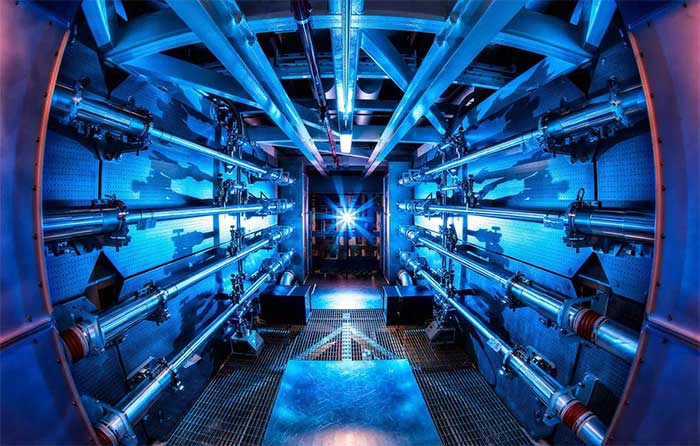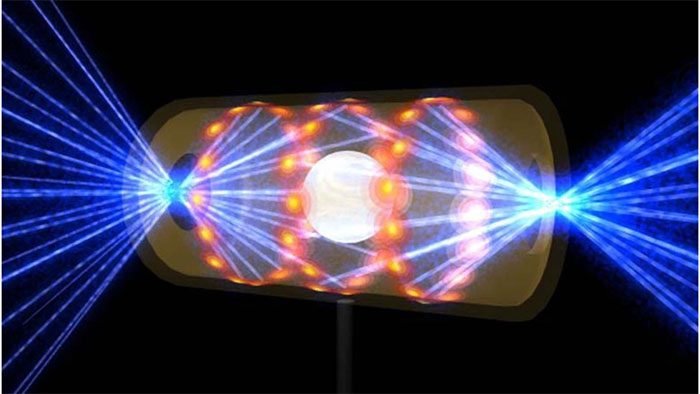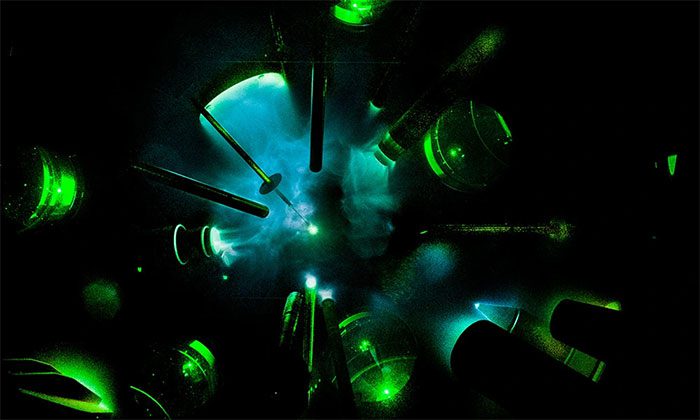A technology that researchers have been working on for decades is making new strides, with electricity generation from nuclear fusion promising to provide an infinite energy source for humanity.
At the end of last year, fusion researchers at the National Ignition Facility, Lawrence Livermore National Laboratory in California (LLNL), achieved what physicists have been striving for over many decades.
A process known as “ignition” involves extracting significant energy from nuclear fusion reactions.

The nuclear fusion test reactor is being developed by countries such as the United States, France, and Japan.
This year, they successfully repeated the ignition process at least three times, according to reports from LLNL. This marks a significant milestone that could become a solution to the global climate and energy crisis stemming from humanity’s fossil fuel consumption.
Bringing Power from the Stars to Earth
Nuclear fusion is the process that occurs in the cores of stars. It is different from nuclear fission, which aims to break a heavy nucleus into lighter nuclei.
Fusion, on the other hand, combines light nuclei to form a heavier nucleus. The easiest elements to fuse are two forms of hydrogen, deuterium and tritium, which produce helium nuclei and neutrons.
Both fission and fusion share the characteristic of releasing enormous energy, nearly a million times more than the energy released during combustion from fossil fuel engines.

A nuclear fusion test reactor from Japan.
In the nuclear reactors of current power plants using fission processes, besides generating many radioactive elements, one of the other issues is controlling the reaction.
To break a nucleus apart, it must be bombarded by neutrons: the first neutron strikes the nucleus, causing its fission, which produces another neutron. Thus, a chain reaction is obtained, which is the principle behind atomic bombs.
In a nuclear reactor, this chain reaction is controlled, but it requires continuous cooling. A shortage can lead to nuclear disasters, as seen at the Chernobyl (Soviet Union) and Fukushima (Japan) nuclear power plants.
For this reason, fission reactions always carry significant risks of accidents and radioactive leaks, which can turn vast areas into dead zones.
The question that scientists are asking is how close we are to producing energy from fusion that could power the world?
The success of “ignition” is just evidence of the principle and the first step in a long journey to integrate nuclear fusion into our daily lives.
However, scientists hope that ongoing research and experiments can spark a new passion for providing a nearly infinite and safe energy source for our lives.
A Historic Breakthrough Milestone
Researchers at the National Ignition Facility (NIF) in California fired the world’s largest lasers at a capsule filled with hydrogen fuel, causing it to explode and initiate fusion reactions similar to those occurring on the Sun.
This is a theoretical breakthrough where scientists have successfully created controlled conditions of density and temperature that do not exist anywhere on Earth.

Illustration of the nuclear fusion reaction principle.
However, there is still a long way to go before nuclear fusion can become a viable energy production solution.
The thermal energy released from the explosion is greater than the energy input from the laser, a significant achievement because just a few years ago, NIF lasers could only release about one-thousandth of the energy they fired.
To produce a reactor for an operational power plant, scientists need lasers that generate light energy with much higher efficiency, several tens of percent, and successfully fire at targets at a rate of ten times per second.
This results in neutron nuclei that cause steam turbines to spin and produce electricity.
In reality, very few studies have been conducted on fusion reactors, but we are now seeing many new opportunities.
Collaboration Fuels Power
NIF took more than a decade of research to achieve ignition in nuclear fusion, and during that same time, other scientists independently developed new lasers.
They used electronic devices called diodes to transfer energy to the lasers, achieving high efficiency. This successfully converts a significant portion of electrical energy from the grid into laser light.
Prototype versions of such lasers have been shown to operate at rates of ten times per second, the speed necessary for them to be useful in nuclear fusion.

Lasers play a crucial role in nuclear fusion.
These lasers have yet to reach the necessary size for fusion, but research has demonstrated that, in the future, they could meet this requirement.
In the future, the continuous contributions of scientists will help make nuclear fusion for electricity production a reality soon. It is deemed safe, promising to bring a breakthrough in energy for the world, especially at a time when Earth is heavily affected by climate change.
“If the environmental conditions are not ideal, the fusion reaction will stop immediately. Particularly, this reaction also causes an unstable radioactive element like tritium to disappear to yield neutrons and helium (a fairly rare inert element on Earth) that is very energy-rich,” explained Caterina Riconda, a professor of physics at Sorbonne University (France).
Even if the reactor structure risks becoming slightly radioactive over the long term due to neutron bombardment, this radioactivity does not significantly impact the environment and humans compared to the risks posed by fission reactions.
Thus, from the perspective of waste safety and cleanliness, fusion has a significant advantage.
Regarding the fusion roadmap, scientists are researching how to deal with alpha particles trapped in reactors and how to regenerate fuel in tokamaks (devices for confining hot plasma), recovering neutrons to heat water and run turbines.
They are even aiming to produce tritium on-site and reintroduce it into the fusion reaction.
Before the performance of fusion can be fully enhanced, there is still much work to be done. Scientists will gradually increase the power in future fusion reaction tests.
No one is entirely sure that these ideas will succeed as they have their own challenges and have never been tested on a large scale.
To achieve this, research facilities will need hundreds of millions of dollars in investment for each project, with no guarantee of success.
However, there is currently a changing wind blowing, which is the involvement of private companies.
Various long-term vision funds have begun investing in startups advocating fusion as a commercially viable energy source.
The private sector has revolutionized the electric vehicle market and the rocket industry; we hope it can also provide a “boost” for fusion, helping to solve the global energy crisis.





















































